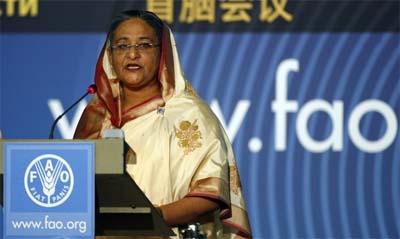Notwithstanding progress in tackling natural disasters and establishing social safety nets, the poor in Bangladesh remain highly vulnerable to a range of internal and external shocks. These lagging regions are mostly border districts. Here, the labour force is mainly engaged in low productivity agriculture, connectivity with growth centers is limited, human indicators are weak, and good jobs are scarce.
For the development challenge to be addressed comprehensively, four main development constraints need to be met. First, labour productivity needs to be increased, as most of the labour force is still engaged in low-productivity activities. Second, trade logistics performance is weak since the current cost of Bangladesh trade facilitation is very high, and this results in a reduction of trade competitiveness. Third, infrastructure constraints are present, with energy inadequacy and transport inefficiencies being severe constraints to accelerating growth. Finally, water issues and climate change effects are acting as impediments to development, resulting in a reduction in farm productivity and an increase in rural suffering.
The resurgence of global interest in understanding growth dynamics shows that geography matters for growth. While Bangladesh decries its downstream location disadvantage which emerges from the flow of international rivers; it does not celebrate its two major advantages, tremendous access to sea and being the gateway between Central/South Asia and East Asia. There are two distinct ways in which Bangladesh can take advantage of its geographic location. First, evidence shows that countries with access to sea, ceteris paribus, do better than land-locked countries. By opening up existing ports and through further investment, Bangladesh can tap a dynamic source of revenues and economic growth. The true potential, for example, is illustrated by the development performance of internationally renowned sea ports like Rotterdam, Singapore and Hong Kong. The second source is Bangladesh’s location as the ‘Asian gateway’ linking Central and South Asia with East Asia. Through better land, air, and sea connectivity Bangladesh can become an Asian commercial hub with immense development opportunities.
Bangladesh will benefit from regional cooperation, and the recently agreed upon cooperation agreements between India and Bangladesh will lay the basis for benefit flows into the Bangladeshi economy. These agreements focused on the four main development constraints which are currently hindering economic development in Bangladesh.
The important policy and strategic considerations in these four areas would include the following: First, trade and investment reform, namely the undertaking of regional actions by Bangladesh, Bhutan, India and Nepal to reduce all trade and non-trade barriers beyond normal trade duties. Second, regional transport connectivity will be essential, as the long term gains from regional transport connectivity are significant. Third, Bangladesh will benefit from long-term energy cooperation. This will be facilitated, in part, by the grid connectivity initiative and this trade enabling action could be generalised by a broader policy of engaging in energy trade with India and other neighbours—there are a number of areas where this engagement can be broadened. Finally, specific policy actions to help build regional water cooperation are required. Here it will be important to build on the experience of past dialogue where progress has been very limited, and there may be a need to rethink the engagement strategy with a strategy that distinguishes between quick gains and the long-term options.
The benefit flows resulting from the pillars of this agreement in the short-to-medium term will be income from exports, transit and port fees. These will likely increase by $1 billion per year and with bilateral cooperation better energy security will result, and there will be reduced spatial disparity within Bangladesh through better connectivity and investment. Over the longer-term, more and better regional cooperation will help increase the Bangladesh growth rate by an additional 2 per cent per year, and this is a step forward for addressing long-term vulnerability from water shortage and flooding.
More and better regional cooperation is currently constrained, in part, by political will and public misconceptions. A well-designed public campaign will be helpful to build public opinion. This can be done by undertaking sound technical analyses of issues and through communicating the benefits more broadly to the public. Furthermore, partnerships with local think tanks can help with analytical work as well as garner broader public support, and the multilateral approach to cooperation based on commercial principles will also help deflect misconceptions of political deals.
The quality of the implementation will depend upon strong partnerships with the private sector, local think tanks and International Financial Institutions. In particular, quality analytical work on a range of topics relating to trade facilitation, international connectivity agreements, pricing policies, least-cost options, and distribution of gains from cooperation will be essential to ensure best outcomes. India relies on a range of government-sponsored think tanks for the pushing of its regional agenda (ICRIER, IDSA, NCAER, NIPFP, RIS). Bangladesh needs to gear up its efforts to establish partnerships with local think tanks, and this is especially important given the serious capacity constraint present within the government.
Sadiq Ahmed is Vice President of the Policy Research Institute of Bangladesh (PRI). He formerly served as the Chief Economist and Director Economic Management of the South Asia Region of the World Bank in Washington DC.

